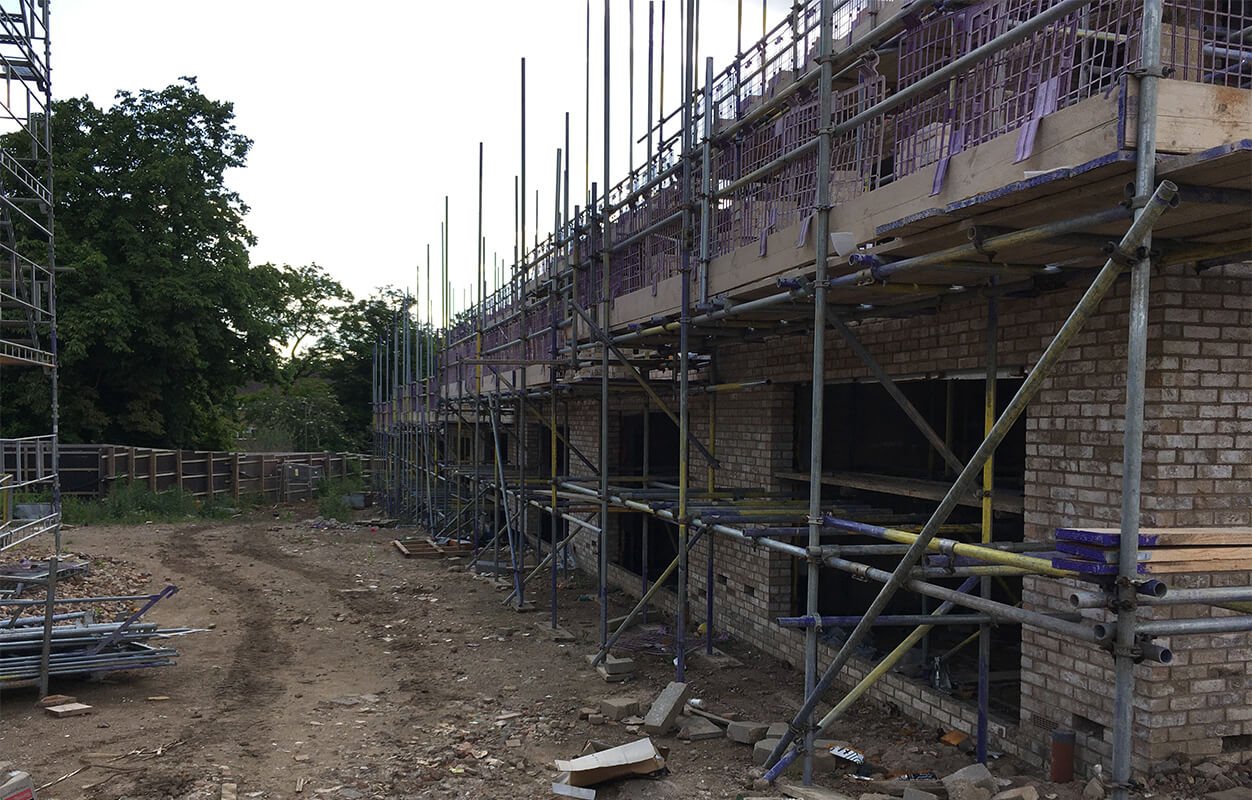Putlog scaffolding is a type of scaffolding that is supported by the structure itself, with the putlogs (horizontal beams) being inserted into holes or sockets in the building walls. When using the putlog scaffolding system, holes on the wall of the structure act as the support for the entire scaffolding structure. A single ledger and a single row of standards are used to erect the scaffolding.

The term bricklayers scaffold, which is another name given to this putlog scaffolding method, is a term derived from the fact that the scaffolding structure is attached to the wall of the building which is bricks.
The main difference between putlog and independent scaffolding is the way they are erected. The putlog scaffold is supported by the wall while independent scaffolding is erected from the ground up.
Putlog vs Independent scaffolding
| Putlog | Independent |
|---|---|
| It has extensions from the wall supporting it | It is erected from the ground up |
| It offers more stability due to its rigidity | Not as rigid compared to putlog |
| You need fewer materials to erect | Needs more materials for the erection |
| There are uncovered putlog holes left on the wall after removing the putlog | Does not need or leave any holes on the wall |

This scaffolding system is quite popular since it only requires a few components to set up compared to an independent scaffold. With regards to its safety, a putlog scaffold is safer to use compared to other methods of scaffolding since it is linked to the building itself for support.
One of the major drawbacks of using this scaffolding method is that the construction work has to wait for the brickwork to be set for the putlogs to be inserted. The putlogs also leave holes on the structure walls which gives the construction workers the added task of having to go back and fill all the putlog holes. This ends up extending the period upon which the construction project will be completed.
Advantages of Putlog
The main advantage of the putlog scaffolding is that it offers more stability. The fact that one end is erected on the wall makes it more rigid, making it safe to use in high wind areas that may bring independent scaffolds down.
The other advantage is that you need fewer materials when erecting it compared to the other types of scaffolding. All this is thanks to its old-fashioned nature.
Although the putlog is steady and easy to erect, it is important to consider the holes left on the walls. That might help you decide the scaffold you choose to erect.
Components of a putlog scaffolding system
There are several different components that make up the entire putlog scaffolding system. These are:

The putlog
A putlog is a transom that has been flattened on one side. The flat end of the putlog is placed in the hole on the wall and then connected to horizontal tubes with the help of a single coupler.
Ledgers
Ledgers are the link between two standards normally fixed with the help of a double or right-angle coupler.
Standards
These are vertical tubes used to set up the scaffolding structure.
Right angle couplers
A right angle or double coupler is used to link tubes of the scaffolding at a 90° angle.
Putlog coupler
A putlog coupler is what links a transom tube and the ledger tubes.

Installing putlog scaffolding
The first thing to do is to leave the holes in the building structure into which the flat ends of the putlogs will be inserted. You will then insert a putlog to each of the spaces and connect standards and ledgers using the double couplers.
Fix the putlogs on the ledgers using single couplers and place the boards that will serve as working platforms across the putlogs. You are then required to insert two rows of horizontal tubes which will serve as the working platform.
Putlog is another name for bricklayer scaffolding or single scaffolding. Holes are made on the wall and used to support the structure.